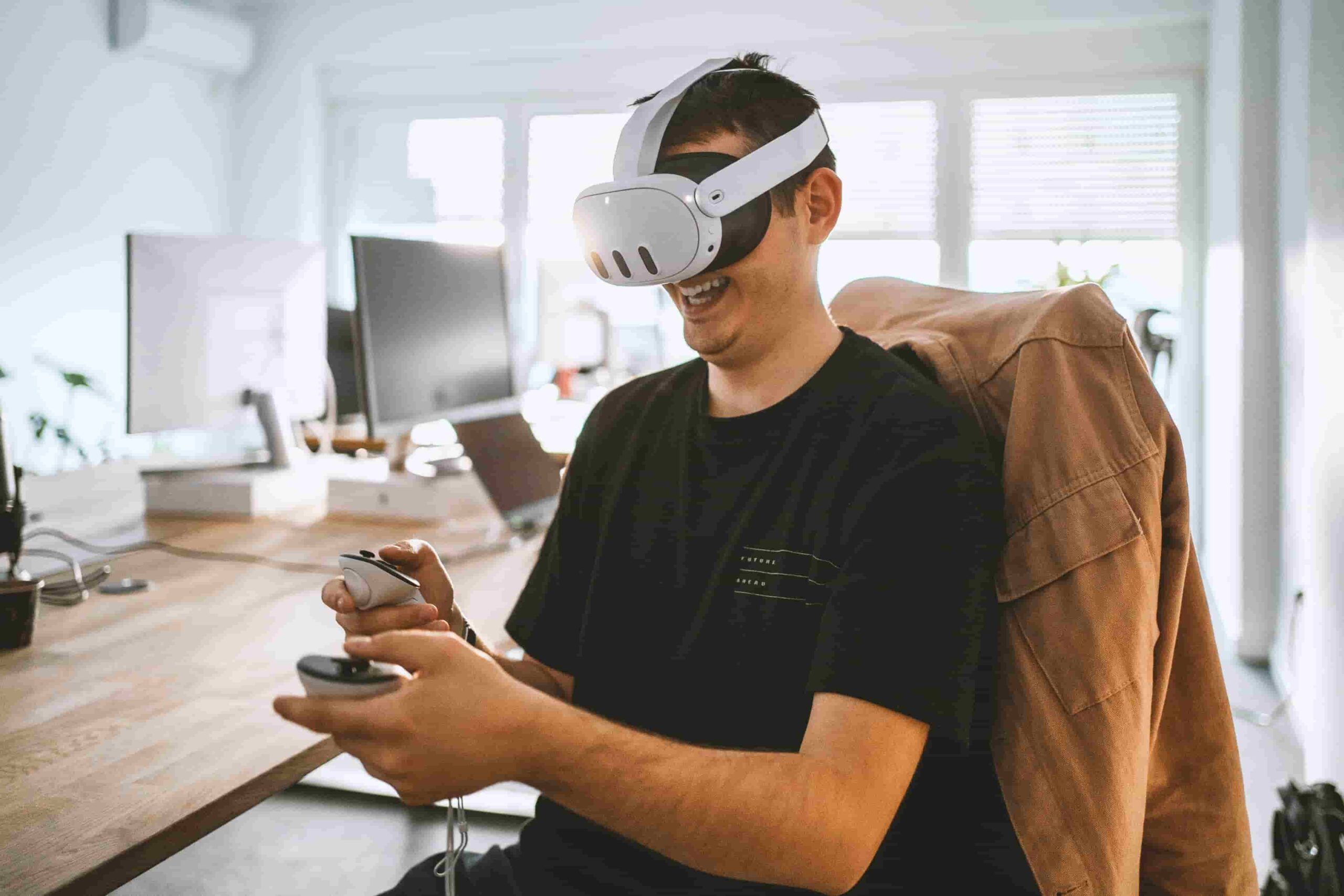In the ever-evolving landscape of technology, Augmented Reality (AR) and Virtual Reality (VR) have emerged as transformative forces, reshaping how we perceive and interact with the world around us. While these technologies have made significant strides in the gaming industry, their applications extend far beyond mere entertainment. This article delves into the latest developments, innovative products, and real-world applications of AR and VR, showcasing the diverse and impactful ways these technologies are changing our lives.
Beyond Gaming: Real-World Applications of AR and VR
From education and healthcare to architecture, retail, and mental health, AR and VR are offering transformative experiences. In this article, we’ll explore the wide-reaching applications of these immersive technologies, highlighting how they are enhancing learning, healthcare, architectural design, shopping, and even mental well-being.
Retail and E-Commerce
AR is transforming the retail experience by enabling customers to visualize products before making a purchase. Virtual try-on apps allow users to see how clothing items or accessories look on them without physically trying them on. Additionally, VR-powered virtual stores are providing immersive online shopping experiences, where users can browse products in a virtual environment and make purchases using VR controllers, like play casinos with Amazon Pay.
Take a major retail brand as an example. They offer a “virtual dressing room” experience through an AR app. Shoppers can see how different outfits would look on them without having to physically try them on. This not only enhances the online shopping experience but also reduces the number of returned items, as customers have a better idea of how a product will fit and look.
Education and Training
AR and VR are revolutionizing education by creating interactive and engaging learning environments. VR simulations allow students to explore historical sites, dissect virtual organisms, or even travel to outer space, enhancing their understanding of complex subjects. In the professional realm, VR-based training programs are being used in fields such as healthcare, aviation, and manufacturing, providing realistic scenarios for hands-on learning without real-world risks.
Take, for instance, medical education. VR is being employed to simulate surgeries and intricate medical procedures, allowing aspiring surgeons to practice in a risk-free environment. This not only enhances their skills but also reduces the margin for error in actual surgical procedures.
Healthcare and Medicine
The healthcare industry has embraced AR and VR for medical training, surgical simulations, and patient education. Surgeons can practice complex procedures in a virtual environment before performing them on real patients, leading to enhanced surgical precision and reduced risks. Moreover, AR is utilized in applications like vein visualization, aiding medical professionals in finding veins for injections and blood draws, especially in patients with difficult veins.
AR’s role in healthcare doesn’t stop there. It is also making waves in remote healthcare delivery. Patients can consult with doctors and receive real-time medical information and advice through AR-enhanced telemedicine applications, enhancing the accessibility and quality of healthcare.
Architecture and Design
Architects and designers are utilizing VR to create immersive walkthroughs of their projects. This technology allows clients to experience architectural designs in a realistic, three-dimensional space before construction begins. AR, on the other hand, can overlay digital blueprints onto physical spaces, enabling architects to visualize proposed changes directly within existing environments.
The use of VR in architecture extends beyond the planning phase. It’s being employed for virtual property tours, allowing potential buyers or renters to explore properties from the comfort of their homes. This is particularly valuable in today’s world, where physical visits can be challenging or restricted.
Mental Health and Therapy
AR and VR are being used in mental health treatments and therapy sessions. VR exposure therapy is particularly effective in treating phobias, PTSD, and anxiety disorders. Patients can confront their fears in a controlled virtual environment, helping them manage and overcome their anxieties. AR applications are also assisting individuals with autism in improving their social skills by providing interactive scenarios for practice.
The use of AR in mental health is diverse. It extends to mindfulness and meditation applications that help users relax and cope with stress. These apps often use AR to create calming and immersive environments, aiding in stress reduction and improved mental well-being.
Innovative Products
Among the forefront pioneers of the immersive revolution, we find Microsoft’s HoloLens, Oculus Quest 2 by Meta (formerly Facebook), and the integration of AR technology into the ever-popular Google Maps. These cutting-edge technologies are shaping the way we learn, connect, and navigate our world, blurring out the boundaries of gaming and opening doors to new possibilities.
Microsoft HoloLens
Microsoft’s HoloLens is a leading AR headset that blends holograms with the real world. It finds applications in various industries, including healthcare, education, and manufacturing, allowing users to interact with digital content overlaid on their physical surroundings.
One of the notable applications of HoloLens is in the field of remote collaboration. With HoloLens, engineers, designers, and professionals from different locations can collaborate in a shared augmented reality space, making it feel like they are in the same room, even if they are miles apart.
Oculus Quest 2
Oculus Quest 2, developed by Facebook (now Meta), is a standalone VR headset that offers high-quality VR experiences without the need for external sensors or wires. Its affordability and accessibility have made it immensely popular, bringing VR technology to a broader audience.
Oculus Quest 2 is particularly notable for its social VR experiences. Users can meet up in virtual environments and interact with friends and colleagues, bridging the physical gap between people in a digital world.
Google Maps AR Navigation
Google Maps has integrated AR technology to provide real-time navigation information. By utilizing the smartphone’s camera and AR overlays, users can see arrows and directions overlaid in the real world, making it easier to navigate unfamiliar streets.
This technology is especially useful for travelers exploring new cities. The AR navigation feature provides an intuitive and immersive way to navigate urban landscapes and discover points of interest.
